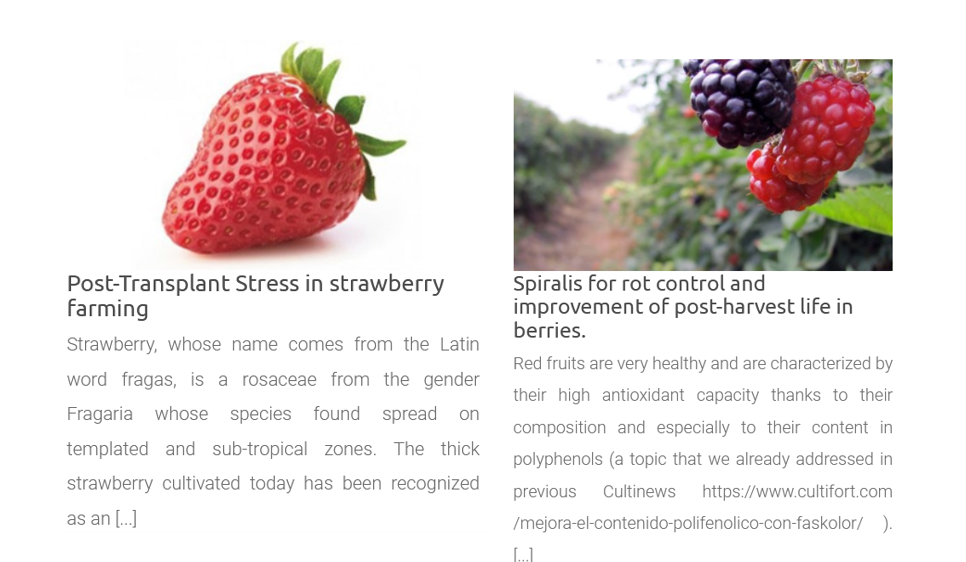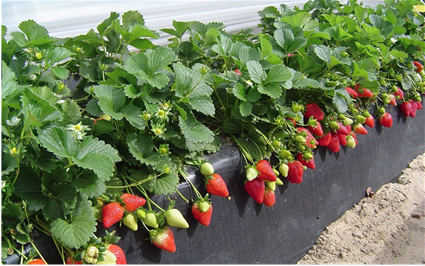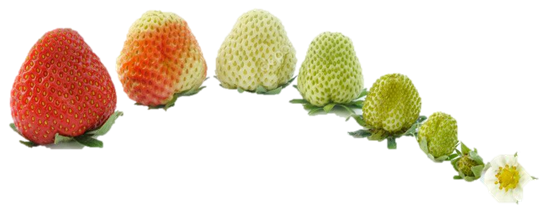Strawberries belong to the Rosaceae family and to the Fragaria genus. While the strawberry is a wild plant that grows in forests, gardens and orchards, the strawberry was born in the 18th century as a hybrid created by French botanists. Strawberries are smaller in size and less intense in color, and are also white on the inside, while strawberries, on the other hand, also have a red color inside. Regarding the taste differences, the strawberry has a sweeter flavor, while the strawberry is more acidic. Among their properties, both fruits are rich in water, fructose, glucose and xylitol, but above all, they stand out for their high content of polyphenols, natural antioxidants, especially vitamin C. Once this brief review has been done and the differences between both fruits In this Cultinews we will refer to the cultivation of strawberries in particular.
Spain is the third world producer of strawberries, behind China and the United States, with a total of 344,679 tons in just over 7,000 hectares (Yearbook of Statistics 2019. Ministry of Agriculture, Fisheries and Food), and the largest exporter worldwide, supplying mainly the European Union.
The economic importance of this crop has led to a high degree of improvement in it, both at the genetic and productive management level and at the post-harvest level. We have already covered some related topics in previous Cultinews, specifically post-transplant stress mitigation and rot control and post-harvest life management. In the present Cultinews we will focus precisely on the productive management and, more specifically, on the ripening of the fruit.
From an agronomic point of view, strawberry cultivars can be classified into three groups: reflowering or long day, non-reflowering or short day, and remontant or neutral day. Flowering in the first two cases is induced by a certain photoperiod, while this factor does not intervene in the third. In any case, it is not only the photoperiod that influences, but also the temperatures or hours of cold that the plant supports.
The varieties usually grown in Huelva are of the non-reflowering type, mainly due to the mild winter temperatures, which promote almost uninterrupted vegetative activity throughout the year. In this case, the limiting factor for growth is high summer temperatures.
The needs of cold hours, with temperatures below 7ºC, for a good vegetative development and subsequent fruiting, are not satisfied in Huelva’s climatic conditions. This forces the plants to develop in high latitudes, so that once the amount of cold necessary for each cultivar has accumulated, these plants are transferred to the Huelva coast to bear fruit and produce. An accumulation of hours of insufficient cold causes a weak development of the plants, which give soft fruits and a reduced commercial life. An excess of accumulated cold, on the other hand, gives rise to lower productions, a great vegetative growth and the appearance of premature stolons.
After the first flowering and once the plant begins to bear fruit, temperatures below 12ºC are detrimental to the good ripening of the fruit, also giving rise to deformed fruits. The optimum temperature to produce quality strawberries is between 14 and 21ºC. Above this range, the ripening and coloring of the fruit occurs very quickly, preventing it from reaching a commercially suitable size.
Regarding the photoperiod, to guarantee a correct ripening of the fruit, the plants must have between 8 and 10 hours of light a day, or even more. This is due to the fact that the strawberry is a plant that continuously mobilizes sugars, thus needing the energy from sunlight to set in motion the complex mechanism of photosynthesis.
From Cultifort’s technical department, we recommend weekly applications of BVC 2021 and FERKOLOR during the fruit’s ripening period, as long as the conditions are suitable.
- BVC 2021 is a combination of seaweed, amino acids, nitrogen and reducing sugars, which promotes the initiation of the physiological activity of the plant, stimulates the formation of leaves and flowers, delays foliar senescence, improves fruit quality and advances maturation. It is a powerful metabolic activator of the plant, even when the conditions are adverse. And now its formula has been improved using CULTITEK Activating Biotechnology, further enhancing its effect on chlorophyll biosynthesis and photosynthetic activity.
- FERKOLOR is a liquid formulation of potassium, calcium, boron and nitrogen that promotes the formation of fruits with greater size, color, firmness and quality. It helps the fruits to ripen in a uniform and staggered manner, improving the accumulation of sugars and preventing apical rot and softening of the fruit.
Now, when the temperature and photoperiod conditions are not those described in previous paragraphs, as can happen for example on winter days or cloudy days, these being shorter, with fewer hours of light and colder, the fruit will ripen in a slower, even sometimes difficult to achieve optimal commercial color. In this case, the recommendation to apply BVC 2021 would be almost an imperative, made jointly with FASKOLOR. This product is a liquid formulation with potassium, organic acids and peptide complexes selected to accelerate the synthesis of anthocyanins, thus improving the coloration, quality and post-harvest life of the fruit. In this case, as we say, its application becomes essential when the days are shorter, with fewer hours of light and colder, giving a final “push” to the ripening of the fruits. It is also recommended to apply when the plant supports a high productive load that makes the most advanced fruits not finish maturing correctly.






